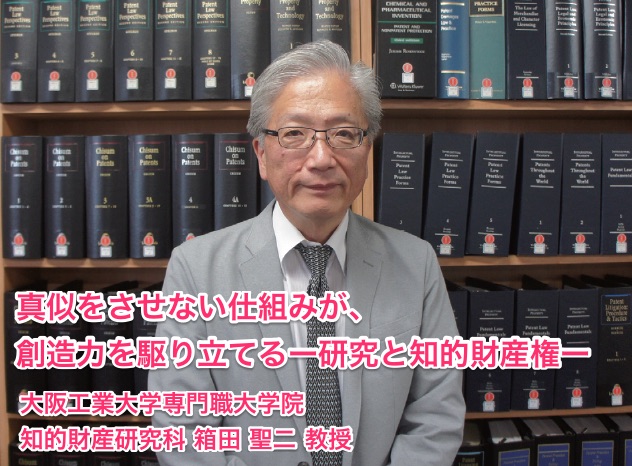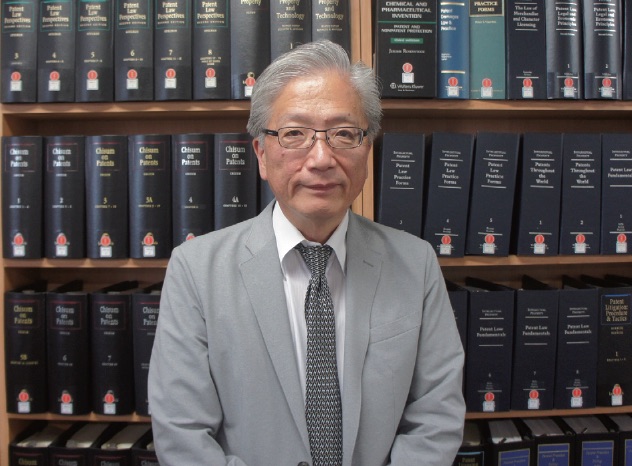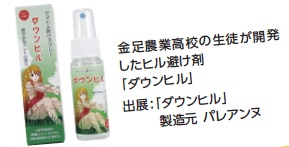- Announcements for middle and high school students
- over the counter communication
- Consultation Service for Proposed Research
Research Consultation News Letter (July 19, 2016), "Mechanisms to Prevent Imitation Spur Creativity - Research and Intellectual Property Rights."
2016.07.19
.
The PDF file is in poster format for easy posting! Please download it!
Issue Research Consultation Correspondence 02 (2519 downloads)
 In 2012, an invention created by a high school student in Akita Prefecture was patented and sold as a product. When new research results are released to society, the concept of "intellectual property rights," such as patents, is often important. We interviewed Dr. Hakoda, an expert on intellectual property rights from Osaka Institute of Technology, to learn more about the intellectual property rights that you will surely need in the future as you pursue your research activities.
In 2012, an invention created by a high school student in Akita Prefecture was patented and sold as a product. When new research results are released to society, the concept of "intellectual property rights," such as patents, is often important. We interviewed Dr. Hakoda, an expert on intellectual property rights from Osaka Institute of Technology, to learn more about the intellectual property rights that you will surely need in the future as you pursue your research activities.
What is Intellectual Property?
An invention is a new idea or something that solves a minor inconvenience in our daily lives. Some of such inventions are created easily, while others require a lot of time and research investment. Inventions are considered property created by human intellectual activity and are called "intellectual property.
Intellectual property rights to protect the formless
While land, buildings, and cars are called tangible assets, intellectual property is called "intangible assets" because it has no physical form. Intangible assets cannot be locked up like a car and are at risk of being stolen easily. Therefore, even if you were the first to invent something, others who hear about it may profess that they were the first to come up with it, or others may copy it. To avoid such a situation, the "intellectual property right," a right to protect intellectual property, exists.
Are intellectual property rights only for monopolies?
On the other hand, from the perspective of others, this right can be said to grant inventors a monopoly on their ideas. However, Dr. Hakoda believes that "the raison d'etre of this right is not to monopolize ideas, but to accelerate the 'intellectual creation cycle' for companies, researchers, and others. The intellectual creation cycle refers to a series of steps: (1) to obtain rights to excellent research results so that they cannot be imitated; (2) to sell products made with those rights and receive compensation by lending the rights to other companies; and (3) to use the funds to conduct new research and development again. By repeating this cycle, each company can accelerate the development of products that are unique to that company," says Dr. Hakoda.
Intellectual Property Strategies to Jumpstart Japan's Regenerative Medicine Sector
In the field of regenerative medicine, which is Dr. Hakoda's specialty, the cycle is even more active. iPS cells have become the focus of attention, and companies and universities around the world are conducting research in this field, and many new inventions related to "application" to patients are now emerging from Japan, Europe, and the US. Japan has the advantage of holding the rights to iPS cell technology, which is the basic invention in the field of regenerative medicine, but Europe and the U.S. are ahead of Japan in the field of applied research, and if other companies, especially foreign companies, were to take over patents related to applied research, it could hinder the practical application of the technology. To prevent this from happening, Dr. Hakoda is contributing to regenerative medicine by proposing strategies on how to turn the intellectual creation cycle around and spur the creativity of Japanese companies and universities.
 |
| <The teacher we interviewed Osaka Institute of Technology Professional Graduate SchoolGraduate School of Intellectual Property Professor Seiji Hakoda After completing his graduate studies at the Graduate School of Agriculture, Kyushu University, he joined Takeda Pharmaceutical Company Limited. After working at the Central Research Laboratory, where he was engaged in research on anti-cancer drugs, he was transferred to the Intellectual Property Department, where he worked on pharmaceutical and biotech patents. Since 2013, he has been conducting research on intellectual property strategies in the medical field at Osaka Institute of Technology, utilizing the knowledge and experience he gained in his previous position. |
Let's do it! Introduction to High School Patents! Master how to find and read patents!
| Step 1: Find the patent! Search for "Patent Information Platform" on the ❶search site. Click on "Patents and Utility Models" in the upper left corner of the screen Click on ❸ "Patent/Utility Model Number Inquiry Enter "2012-97061" in the "Number" field of ❹type "Published and Published Patent Publicity" and press the "Inquire" button. The patent 2012-97061 was obtained by students at Akita Prefectural Kanasoku Agricultural High School for the development of a leech avoidance agent, which has also been commercialized.  |
Step 2 Read the patent! A patent consists of several items. <Composition of the Patent bibliographic information Summary (issues and solutions) ❸ Patent claims ❹Detailed Description of the Invention a. Problem to be solved by the invention b. Means to solve the problem c. Effects of the Invention d. Forms for working the invention ❺Drawings ❹ Let's read and understand the whole picture. In particular, ❸ is the part that is protected as intellectual property. If someone else's invention fits into this category, it is considered a patent infringement. There are other patents for high school students, so let's take a look at them. Patent Application 2009-165445 (Ibaraki Prefectural Mito Agricultural High School), Patent Application 2015-133912 (Chiba Prefectural Narita Seiryo High School) |
| <Let's use it! What is the consultation service for research issues? |
| Research Practice Partner Universities Manufacturing DivisionOsaka Institute of Technology |
| Teachers who have registered as "Education Support Teachers" will receive the latest Science Bridge News every Tuesday as a PDF file edited into an easy-to-use wall newspaper format for use in schools. For more details, please click here ⇒.Science Bridge News for School |
